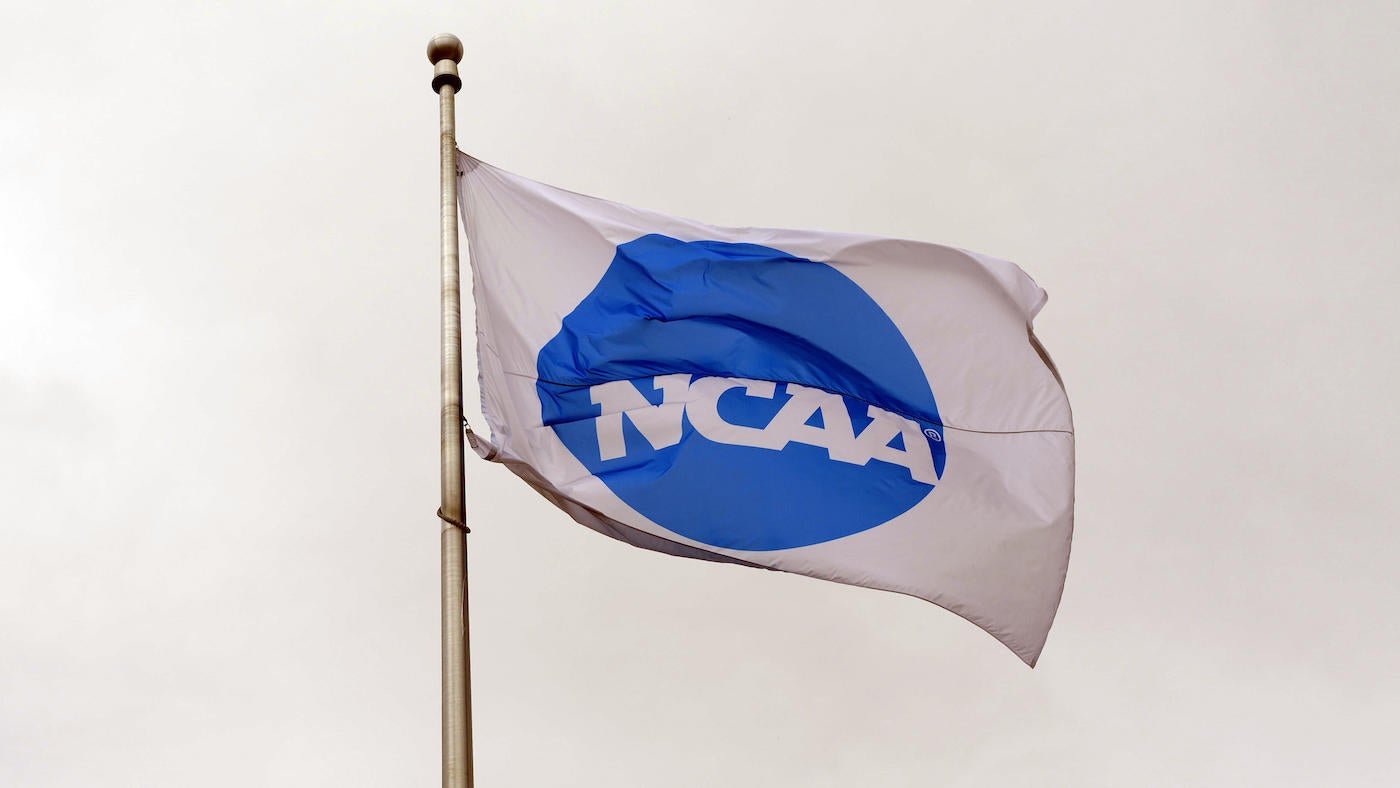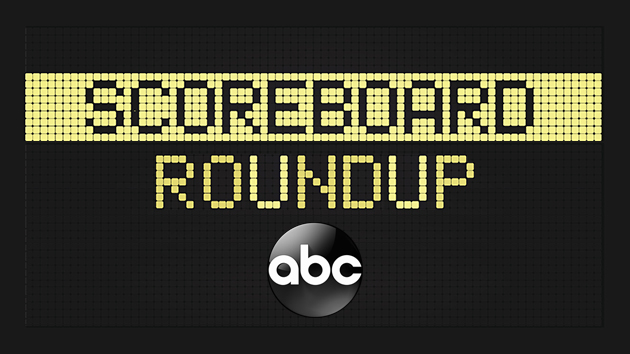Why revenue sharing with college athletes remains complicated amid antitrust settlement pushing forward
Written by CBS SPORTS ALL RIGHTS RESERVED on August 2, 2024


If only there was just one thing missing from the House v. NCAA settlement agreement filed last week. Instead, there are several thousand: the athletes themselves.
The landmark settlement — still awaiting final approval in court — formalizes schools compensating athletes for their on-field talents. It’s OK to say it out loud: Pay for play has arrived.
Actually, pay for play is here against the will of some of those who opposed it. Deal with it.
“That is something that for over 100 years they fought desperately,” said Jim Cavale, founder of Athletes.org, a college athletes association. “You can pull tons of statements from coaches, ADs, commissioners and presidents saying that day would never come. Some of them are still active. And it’s here. It’s going to happen.”
But in what form? With a few days for the settlement implications to, well, settle, it’s clear there is a giant hole in the 133-page document. Not one athlete was at the table with a voice when the deal was hammered out.
Call it the NCAA’s lingering paternalism mixed with plaintiffs’ lawyers expertise at firing an arrow to the heart of the NCAA’s model, but that’s a hole too big to ignore. There is $20 billion in revenue sharing alone available for Power Four athletes over the next 10 years.
“You have a bunch of lawyers working with the NCAA without athlete involvement to sort of work out these issues,” said sports law attorney and athlete advocate Maddie Salamone. “Maybe athletes get in a room and they decide these are things they’re in favor of and they’re bargaining. This is not that. It really comes across as an effort to settle the case and collect fees.”
Plaintiffs’ attorneys Jeffrey Kessler and Steve Berman will oversee schools’ reporting of revenue over the next decade. The settlement states that “established college advocacy organizations” such as Athletes.org can be used to “provide input on the views” of athletes.
The reactions on social media have been swift.
Schools have the option of providing 22% of total athletic revenue counting media rights, ticket sales and sponsorships — an average of $23 million per school. That amount is capped but will raise about 4% per year to around $34 million in 10 years.
Veteran class-action lawyer Len Simon told CBS Sports in June that the settlement was “a new price fix at a different level.”
Capping is a problem. That’s how we got here in the first place with the NCAA restraining athletes’ ability to earn what they’re worth.
Berman, among others, has pointed out the only way for the NCAA to protect itself is to collectively bargain with athletes or get an antitrust exemption from Congress.
Amid a volatile presidential election year, what are the chances of getting anything done on Capitol Hill?
“This is purgatory,” Cavale said. “A lot of people look at this as ‘The Great Fix’ and everything is going to be OK now … It’s not. ‘The Great Fix’ would be the college athletes having a partnership with their school, conference and NCAA through an agreement. Whether that’s collective bargaining, [as] employees, unionization, or whether there is another mechanism in the current state where they’re not employees, they need to have a partnership to make this work.”
Athletes are going to be paid (more), but the average fan has already experienced an earth-shaking change beginning with NIL three years ago. Voting with their eyes (record TV ratings) and wallets (increased national attendance), it’s clear they largely don’t care about the money when the ball is kicked off on Saturdays.
What has emerged is a sort of litigation fatigue. While we’re in purgatory, while “heaven” may be achieved only when the table is cleared of lawsuits, realignment and the unknown impact of private equity on the game. One solution that drew attention this offseason makes sense but is still years away.
All of it could span at least the 10 years of the House settlement.
“The agreement, as drafted, answers a bunch of burning questions. I give the parties credit for arriving at those answers,” said gender equity attorney Alexis Trumble. “But it’s not a perfect document, and I think we do have a long way to go before we have any degree of comfort before questions are answered.”
The point of this breakdown is to highlight the speed bumps ahead. From this view, lawyers on both sides will be busy until there is some sort of partnership with players.
Until then, while House v. NCAA is on the way to getting settled in time for summer/fall 2025 implementation, the mechanics of the settlement itself has opened the doors to more unrest at least. More litigation for sure.
Obstacles remaining amid antitrust settlement
Dividing up $23 million: It’s not going to be easy. How that revenue money is distributed, and to whom, will be up to each individual school.
Some schools may simply decide to give half to women’s sports. Some may give weighted shares to football and basketball because those sports produce most of the revenue. That alone could be a huge recruiting issue because, in the end, it’s always all about recruiting.
Most Power Four schools will fully fund the $23 million. Those that don’t will be further subdivided from the big dogs residing in the SEC and Big Ten (at least financially).
Then there’s the possibility the players themselves may weigh in. Incoming freshmen will have the option of opting out of the settlement. What if an existing quarterback decides — or the school decides for him — that he gets a $15 million share because, well, he is the quarterback?
“And leave the other $8 million for everyone else,” Sam Ehrlich, Boise State assistant professor for legal studies concluded.
“It’s going to create a lot of burden on athletic departments trying to manage that $23 million,” he added. “That’s why this is capped. It’s so problematic. It’s a salary cap without representation. Different schools are going to treat this differently.”
Sports law attorney Mit Winter, a leading authority on the subject, has even bigger “what if?” Imagine football players themselves organize and demand 75% of the pot. (For context, football makes up for 80% of the worth of the average media rights contract.)
“I think that’s where there is going to be a battle,” Winter told CBS Sports. “I find it very hard to believe very many schools are going to pay out proportionally to their female-male student-body population.
“I could really see Power Four football and basketball saying, ‘We want to make sure that we get a sufficient cut of this $23 million.’ “They could all band together and say, ‘All right, guys, we’re all going to agree our schools cannot give us less than 75% of that $23 million because we’re generating that revenue.’ “
What’s more likely is there being a common-sense approach — an acknowledgement that the revenue sports actually create the revenue.
“A hybrid model could work well, ensuring a base level of funding for all sports to reflect equity, with additional funds distributed based on revenue generation,” said Jeff Hoffman, agent for women’s basketball stars Haley and Hanna Cavinder. “This approach balances financial contributions and fairness, supporting the growth of women’s athletics.”
Going forward, the modern college athlete will be well-compensated, at least enough compared to the average college student. Combine revenue sharing with existing cost of attendance, scholarship money and Alston benefits, and athletes will be making the combined equivalent of $50 million. That’s half the revenue of the average FBS athletic department.
That equates with the professional model where teams generally share half of their sports’ revenue with athletes through collective bargaining.
The Title IX question: Gender equity is perhaps the biggest issue not in the settlement. Title IX, the 50-year-old law mandating educational equality for entities that receive federal funds, will affect almost everything involved in the settlement while not actually being included.
This is another school-by-school decision. The Department of Education has weighed in, according to Trumble, saying Title IX will apply to revenue sharing “but offered no practical guidance.”
Institutions will rely on their lawyers and gender equity offices to form a revenue distribution strategy. There is already talk of schools eliminating or de-emphasizing sports to afford revenue sharing.
You’d better believe there are attorneys lined up like planes on a runway ready to file suit against schools.
Try to figure all that out in an election year that could change how the White House views Title IX.
“We have a settlement agreement that has been [agreed upon] under one administration, and depending on the results of the election, that could look entirely different,” said Trumble, who advises schools on compliance and gender equity issues.
All of it means schools/coaches are scrambling, trying to figure out what they can offer in recruiting while at the same time pursuing the Class of 2025. The agreement wouldn’t go into effect until the beginning of the 2025-26 academic year. The current college football recruiting cycle will be finalized the first week of February 2025.
“You would like to know what you can offer,” Trumble said. “Recruiting starts well in advance. Coaches are building teams in 2025 that are going to look a lot different. Parents are going to want to know what type of impact there is going to be. Coaches are going to want to know what type of offers they can make.”
The special master of what? The court will appoint a special master to resolve revenue-sharing disputes raised by the settlement. There would be an appeals process overseen by an arbitrator, and all decisions would be final.
That is potentially scary given recent events. The NCAA has already tried the third-party enforcement approach and failed miserably. You may remember the Independent Accountability Resolution Process (IARP) that was discontinued in January. The system collapsed upon itself basically because its members didn’t know what they were doing.
Entire cases had to be re-investigated because respected retired judges, lawyers and administrators were unfamiliar with NCAA rules and cases dragged as a result. NCAA enforcement types were livid because their work was being redone or, in some cases, ignored.
Now, consider that a special master is defined as a court-appointed volunteer attorney. That sounds a lot like the IARP, folks.
The concern here is that the same thing happens with settlement oversight. It is an agreement that not only isn’t finalized, but it isn’t fully understood yet.
“There’s a big myth around arbitration in many respects,” Salamone said. “Having been involved in arbitration, I can tell you it’s a kangaroo court. You really don’t know what is going to happen.”
The fair market value of Jared Casey: Three seasons ago, Casey, a Kansas walk-on fullback, became an NIL poster child.
After catching the game-winning touchdown in overtime at Texas, Casey went viral. Applebee’s jumped in with a commercial deal.
So, it’s worth asking: What happens to the next Jared Casey? The settlement allows the NCAA to determine the fair market value (FMV) of deals.
That raises several concerns. What Casey did literally had no comparison — an anonymous walk-on who barely played becoming an overnight viral sensation. How does FMV account for that?
“Nobody can tell you what fair market value is for college athletes,” Salamone said.
There certainly isn’t a comp for Ole Miss quarterback Jaxson Dart’s NIL deal that provides him with a private plane. It was described by Forbes in February as “first-of-its-kind” deal.
The mother of LSU gymnastics star Olivia Dunne has weighed in on the topic.
There could be thousands of viral moments that make content superstars out of unknowns. One possible solution: Instead of comparing athletes to athletes, perhaps compare certain compensation to other students who can be artists, producers, influencers and viral sensations.
An old adage that should apply here: You’re worth what someone will pay you.
The NCAA seems destined for lawsuits if they don’t pay heed to those words.
Booster shots: With the settlement, the NCAA is back in the business of defining a booster. That’s an issue. As one veteran observer once put it, “The NCAA can make a booster out of a ham sandwich.”
Check the NCAA’s official definition:
” … any individual, independent agency, corporate entity (e.g. apparel or equipment manufacturer) or other organization who has participated in or is a member of an agency or organization promoting the institution’s athletic program, has made a financial contribution to the athletic department … has as assisted or is currently assisting in providing benefits to an enrolled student-athlete or their family members.”
Lots of word salad, for sure.
“I keep seeing things like, ‘It only applies to boosters, it doesn’t apply to everyone,’ Ehrlich said. “But the way the NCAA defines boosters is so incredibly broad.”
The $600 issue: All third-party NIL deals over $600 must be approved by an NCAA clearinghouse. Any ruling handed down can be appealed to that arbitrator.
“It is a vague way of capping,” Ehrlich said. “And it’s kind of a weird one because the disclosure isn’t necessarily the problem. What is the NCAA going to do with that information?”
Think of your personal information being hacked. It’s another example of athletes not having a voice in the settlement.
“There’s a lot of things the NCAA is trying to jam in there because they can’t get it from Congress,” Ehrlich added. “They tried to fit it in there and the plaintiffs’ attorneys agreed to it. I’m just really concerned about the breadth of the language for NIL stuff.”
Future of NCAA legal issues: The association’s legal liability is alive and well. Lawyers being lawyers, they will see some of the weaknesses pointed out above. There are also a mounting number of suits already in the pipeline.
The attorneys general of Montana and South Dakota are threatening to take legal action, according to Sportico. Houston Christian filed motion saying its financial interests were not represented in the settlement. That motion was recently denied by district court judge Claudia Wilken, who is responsible for approving the settlement.
“The intention of this was to prevent future litigation on these same issues, but you’ve created new issues that people are going to sue over,” Salamone said.
The post Why revenue sharing with college athletes remains complicated amid antitrust settlement pushing forward first appeared on OKC Sports Radio.







